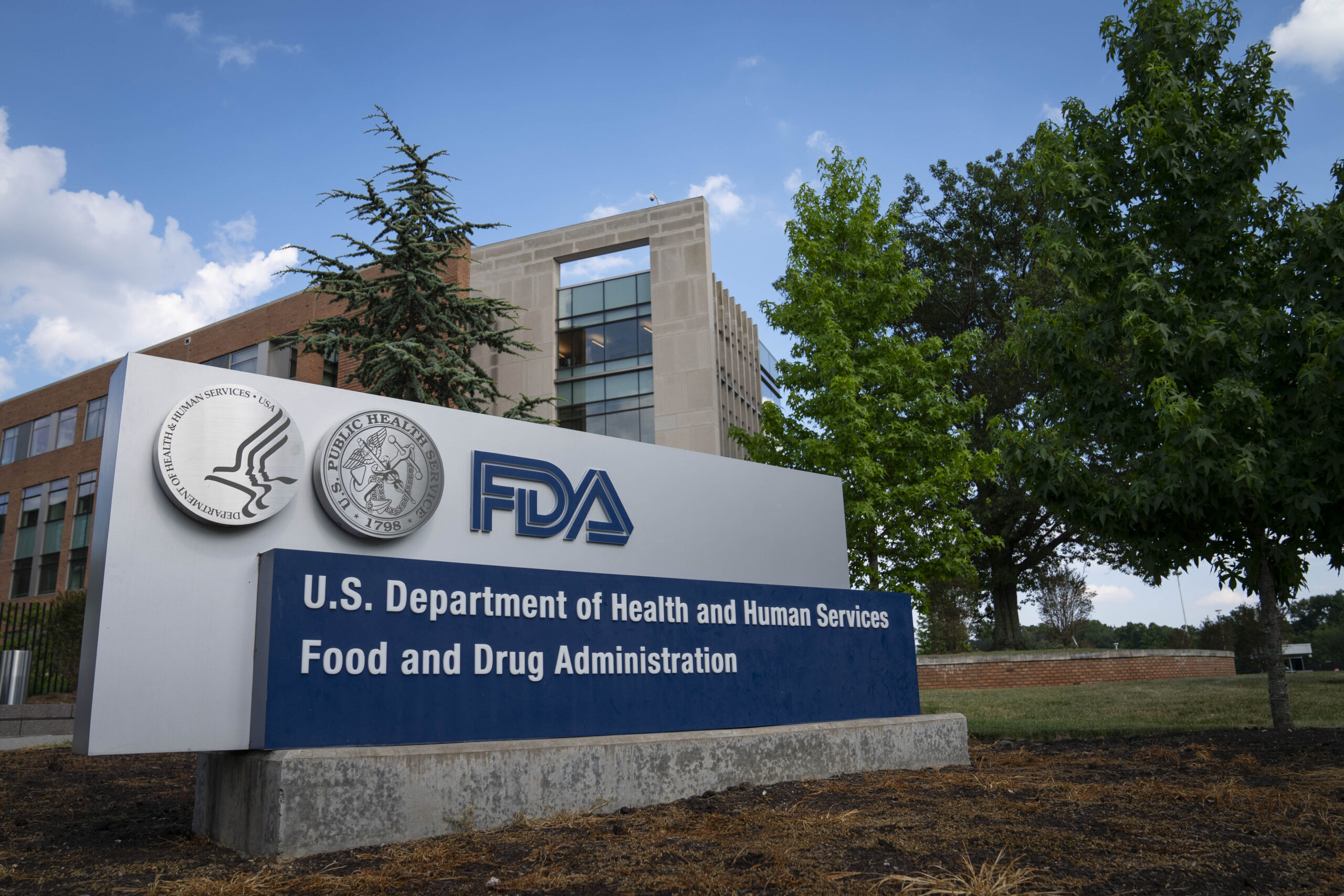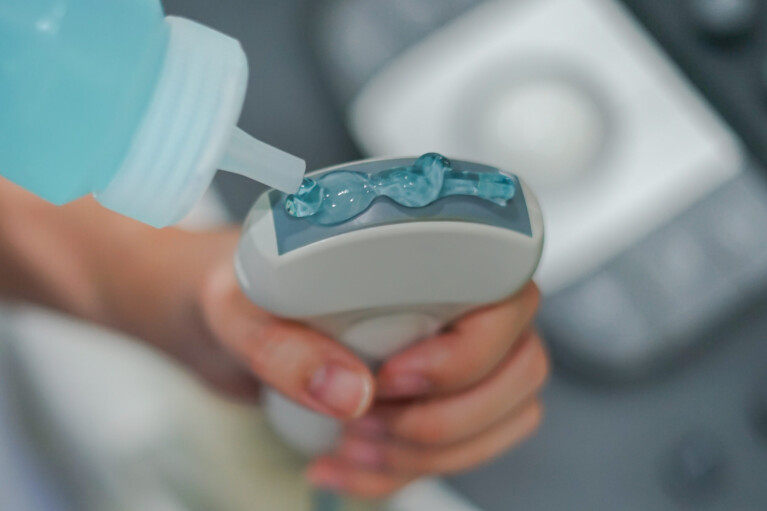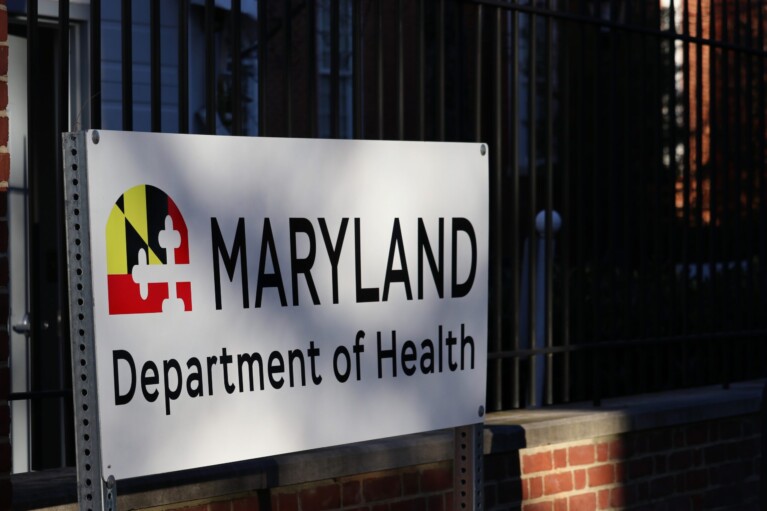‘Zombie drug’ challenging response to Maryland opioid crisis

By Luke Garrett
The opioid epidemic in Maryland has entered a new and uncertain phase. Xylazine — also called “tranq” and “zombie drug” — is showing up more and more in the illicit drug supply across the state.
“It’s pretty scary,” Maryland’s newly appointed Special Secretary for Opioid Response Emily Keller said. “We are seeing a growing increase of the wounds. It’s alarming.”
The drug’s telltale signs are gruesome wounds near the injection sight.
“We’re talking about pretty big wounds here — exposing both bone and actual muscles, tendons — very, very significant deep wounds,” said Dr. Malik Burnett, medical director at the Center for Harm Reduction Services at the Maryland Department of Health. “Very much in the framework of amputation level.”
Back in 2020, nearly 20% of the overdose deaths reported in Maryland had traces of xylazine or “tranq,” according to a study in the Drug and Alcohol Dependence Journal. Since then, the prevalence of xylazine in illicit drug supply has more than doubled in Maryland.
Scientists at the National Institute of Standards and Technology (NIST) started collecting and testing drug paraphernalia in Maryland last October through a new surveillance program called RAD, rapid analysis of drugs. So far, the agency has tested over 1,000 samples and found xylazine in 45% of the supply.
And while scientists can detect xylazine, there’s still a lot doctors who don’t know about the drug: how it affects humans and how to best treat it. During an exclusive interview on the “DMV Download” podcast, Keller and Burnett explained what’s known about this drug, what’s still unknown and how the state plans to combat it.
‘A veterinary sedative’
Xylazine isn’t technically illegal. That’s because it’s a sort of tranquilizer used for animals, hence the street name “tranq.”
“Xylazine is a veterinary sedative that is used mostly to put animals to sleep,” Burnett said. “It is now regularly incorporated into the illicit opiate supply in the state of Maryland.”
In humans, the drug has similar “sedative effects,” Burnett explained, and there’s “a lot of correlative data that shows a higher incidence of injection-drug-related wounds.”
The drug hasn’t been formally studied in humans, making it impossible for scientists and doctors to know how xylazine works in the human body.
“We don’t have good scientific data to be able to describe not only the effects on a human level, but the side effects, as well,” Burnett said.
This makes treating xylazine-related health issues difficult, both in the short and long term.
In the case of an overdose, naloxone reverses the effects of an opiate in the body. After using naloxone on a patient, it usually wakes the person back up. But when xylazine is present, the person can remain heavily sedated, making it hard to tell if the naloxone is working because the patient doesn’t always wake up.
This has caused people to question whether naloxone — often sold as Narcan — works against xylazine.
“People should always use naloxone when they suspect someone is experiencing an opioid overdose, if xylazine is on board, the overdose victim may not wake up fully, but you should see them start to breathe again,” he said. “This is why it is critical to always call 911 for help in addition to giving naloxone.”
The key isn’t waking people up, but simply restarting the patient’s breathing. Placing an individual on their side once they start breathing also helps, Burnett said.
The medical system doesn’t know how to deal with the wounds caused by xylazine. Patients on xylazine are caught between drug treatment centers that can’t care for the wounds, and medical centers that aren’t designed to help with drug-related injuries.
“Our medical system isn’t well-designed to take care of patients with [xylazine’s] chronic wounds,” Burnett said. “There’s stigma associated with injection-drug use and the wounds created from injecting, which makes it difficult for these individuals to get help.”
‘It’s like you’re playing whack-a-mole’
The RAD program tests drug paraphernalia after use — making it hard to trace the origins of xylazine.
“We’ve got data that suggests that there are transnational drug traffickers that have incentive to put all sorts of different substances into the illicit drug supply,” Burnett said. “But where, specifically, xylazine is being introduced — that’s unclear.”
Other possible sources of the drug are diversion from veterinary clinics and the black market online, Burnett said.
Despite not knowing the exact source of xylazine, the reason why it’s popping up so much is clear for Burnett.
Xylazine fits into a whole series of novel psychoactive substances (NPS) that are defining a new phase of the opioid epidemic. And this new set of NPS is just the latest leg in a race to create drugs faster than they can be outlawed.
“So the reason why illicit chemists have created all these various substances is because they wanted to avoid criminal prosecution,” Burnett said. “Trying to make laws to prohibit all of these new substances is like playing a game of whack-a-mole.”
First it was heroin, then drugmakers started to add fentanyl to the mix. Then drugmakers started to make small alterations to fentanyl making them technically legal. Once all those were outlawed, the NPS started showing up. The most prominent one is xylazine.
“It clearly illustrates this phenomenon called the iron law of prohibition,” Burnett said. “Insofar as you prohibit particular substances, you’re certainly not going to stop the illicit demand for said substances. And people are going to intentionally innovate their way around the prohibitions that you’re creating.”
‘You can’t arrest your way out of this’
Keller, the Maryland special secretary for Opioid Response, said the way out of the opioid crisis isn’t the legal system, but the health system.
“You can’t arrest your way out of this,” said Keller, a former mayor of Hagerstown, Maryland. “When we’re talking about someone who’s struggling with a substance-use disorder, you can’t put them in jail and think that’s going to fix them. (That) just doesn’t work.”
For Keller, it’s personal.
“My best friend had a substance-use disorder,” she said. “I watched the system fail her all the time. She kept getting locked up for 90 days, and I kept pleading with the judges, ‘She doesn’t need 90 days in jail; she needs treatment.’”
Back in 2019, Keller ran for mayor, campaigning on changing how the city dealt with opioid use.
“Unfortunately, midway through my initial campaign, she did lose her life to an overdose,” Keller said. “To me, losing my best friend, from the age of 5, at the age of 30, was the most devastating time in my life.”
When asked how she plans to combat the ongoing opioid epidemic and the emergence of xylazine, Keller said getting the word out is a first step.
“I think education is key,” Keller said. “Heroin is only at 1.5% of the samples, but if you talk to people on the street, they think they’re getting heroin. So I think that education level alone is so important, and to be able to get in front of the trends that are happening.”
Keller also wants to de-stigmatize opioid addiction.
“I think just humanizing what is happening here because it’s no one person or one neighborhood or one area or one demographic,” she said. “I mean, this is the reality of where we’re at. We have to get through it together.”
As part of Maryland Matters’ content sharing agreement with WTOP, we feature this article from Luke Garrett. Click here for the WTOP News website.




 Creative Commons Attribution
Creative Commons Attribution